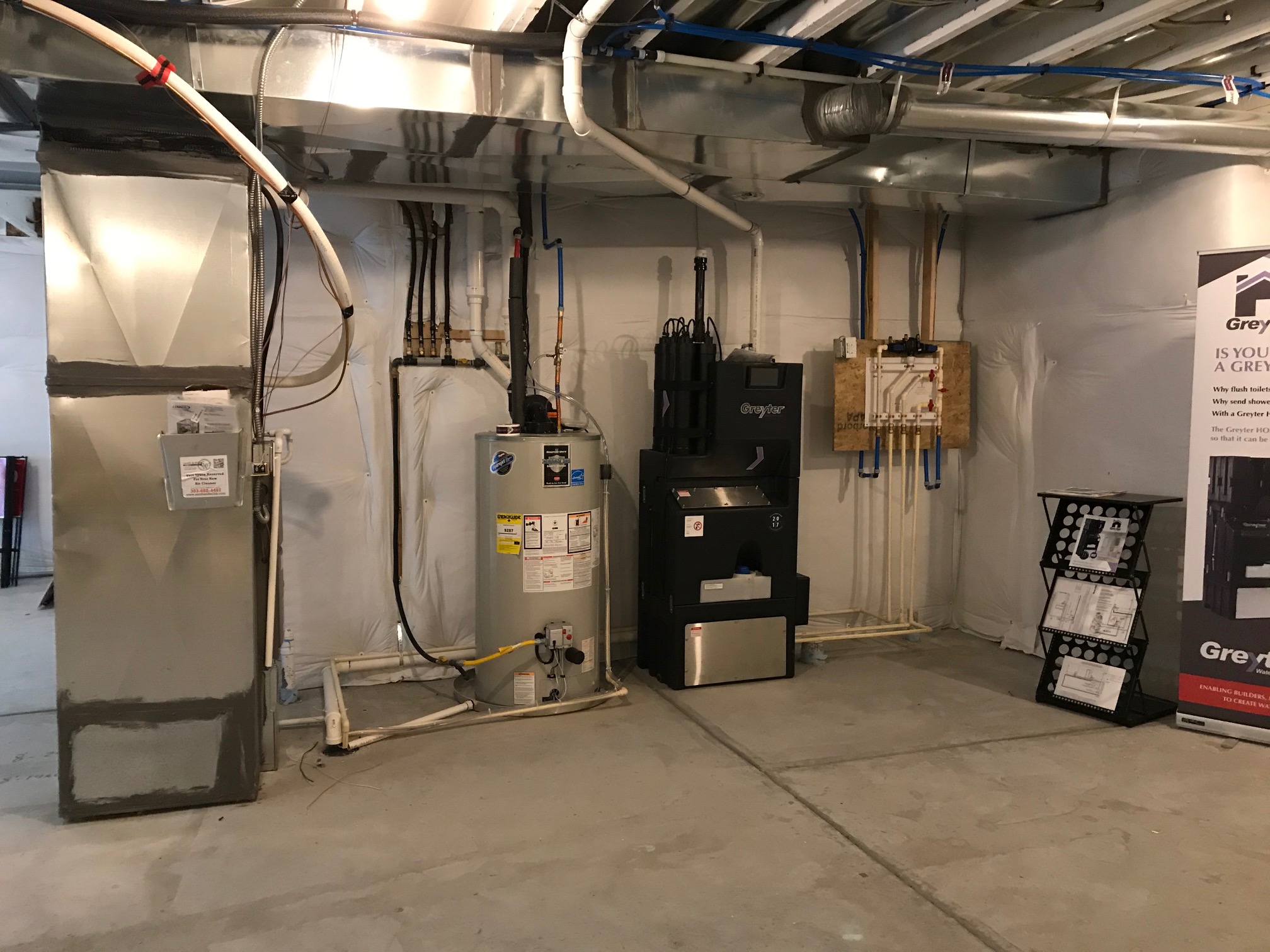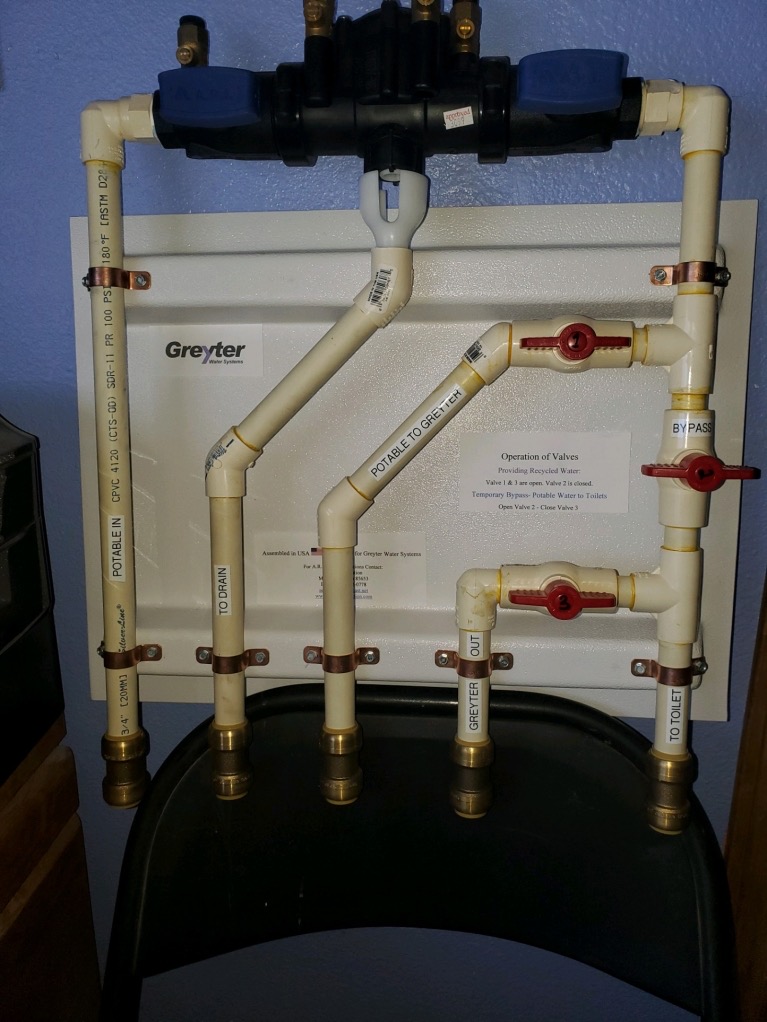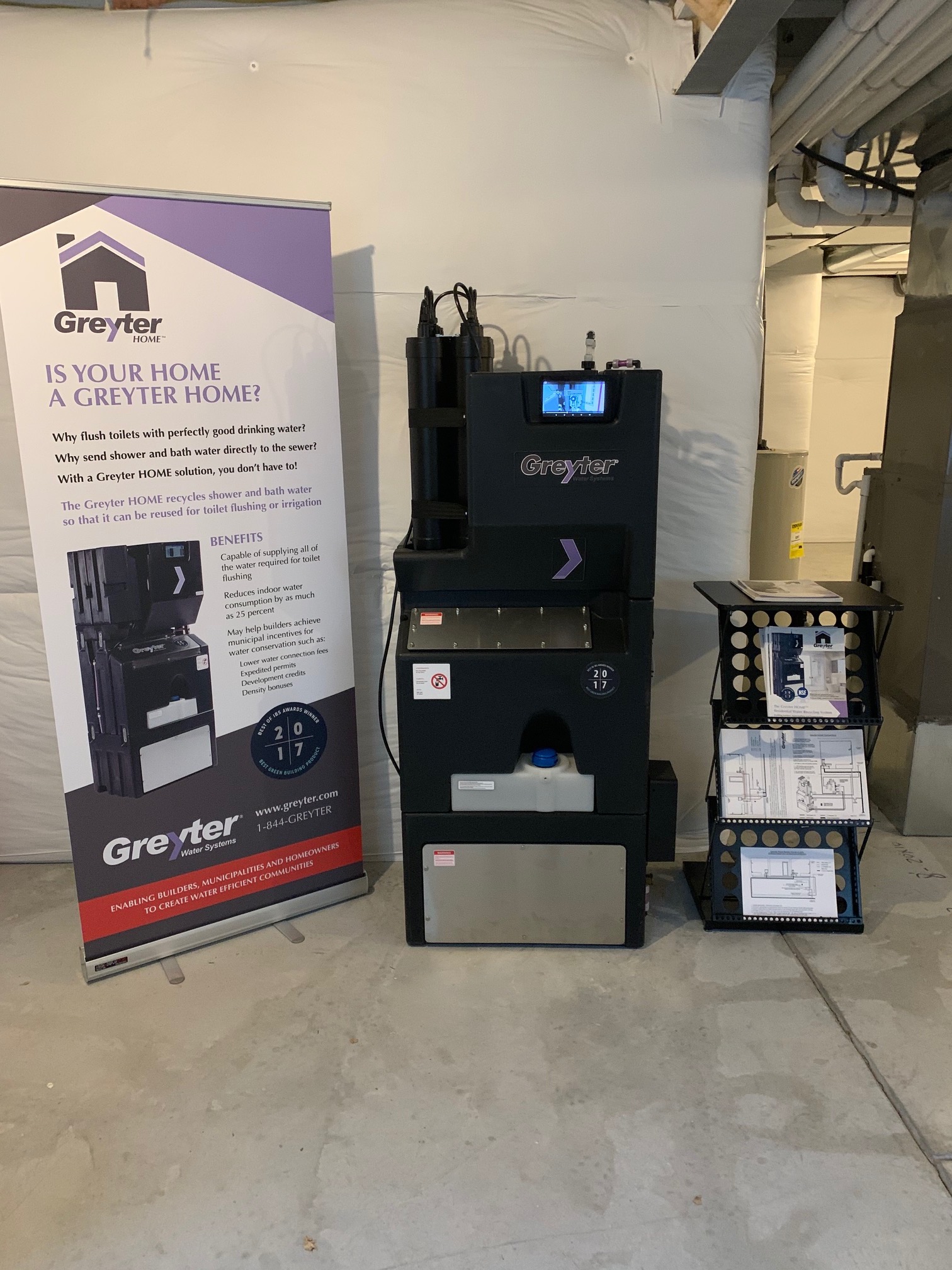
Big water savings come home in groundbreaking pilot project
A big new phase in Colorado water efficiency is unfolding in Denver’s Stapleton neighborhood.
Forty new homes will be equipped with systems that capture shower and bathwater and reuse it for flushing toilets — a major technology shift that will reduce a home’s indoor water consumption by as much as 25%.
A partnership that includes Lennar Homes, Greyter Water Systems, Denver Water and the Colorado Water Conservation Board will install greywater systems in the homes as a pilot project that could lead to wider application of the approach.
Greywater is water captured after use in sinks, showers and washing appliances. Increasingly, innovators are finding ways to use it a second time, often in irrigation and toilet flushing, as a way to conserve water supplies and ease demand on treated water.
“This is a substantial step forward,” said Jeff Tejral, manager of water efficiency at Denver Water. “This has the potential to further drive down indoor water use, help us assess the effectiveness of greywater systems in a residential setting and continue to advance the ball on water conservation.”
The system works by sending water from showers and baths down to a device roughly the size of a small stacked washer and dryer set. The machine screens out any hair or large solid particles. A second process removes microorganisms, remaining solids and most soap. The filtered water then passes through a third process that removes any remaining soaps and foams.
That water is then stored until the toilet is flushed. If there’s too much greywater, excess is sent down the drain — where it would typically go without the system. If there’s too little water for toilet flushing, the system can tap into water lines to make up the difference. Two showers per day will typically meet the toilet flushing needs for a family of four.
A short video on the system explains how it works and how it’s maintained.
Bottom line: Instead of flushing toilets with treated drinking water, you’re flushing them with the water already used for bathing. As Greyter’s co-founder and Chief Commercial Officer John Bell states in the video, it makes no sense to be flushing toilets with perfectly good drinking water.
“We are very excited about this project and applaud both Denver Water and Lennar's vision and look forward to replicating these water reduction efforts in other communities in Colorado going forward," Bell said.
The project also incorporates two additional features:
- A leak detection device that measures flow to all fixtures and can detect a leak as small as .03 gallons. The device shuts off the water automatically when sensing a major leak or a fixture running for an unusual length of time.
- A type of water-saving piping and plumbing layout that efficiently distributes water by shortening the distance hot water travels.
Between the Greyter product, the Phyn leak detection system and the Uponor plumbing, a family of four is expected to save nearly 20,000 gallons annually.
The pilot project aligns precisely with Denver Water’s “One Water,” approach, that calls for the right water for the right use — in this case greywater for toilet flushing.
Denver Water is embarking on a large-scale version of this project at its new Administration Building, where a reuse system will capture wastewater for use in toilet flushing and irrigation. While Denver Water’s system will rely on a different kind of treatment process, one relying in part on filtration using plants, the goal is similar.
“These kinds of projects are a big part of our One Water emphasis,” Tejral said. “Making more efficient use of greywater and stormwater for purposes such as toilets or irrigation is going to be an important part of our stewardship of Colorado’s most precious resource.”
The projects are also in line with Colorado’s Water Plan, adopted in 2015 as a guiding document for how Colorado can continue to thrive with finite water supplies. Statewide goals in the water plan include:
- Conservation: 400,000 acre-feet of municipal/industrial conservation by 2050.
- Land Use: 75% of Coloradans living in communities that have incorporated water-saving actions into land-use planning by 2025.
- Education, Outreach and Innovation: Significantly improved level of public awareness and engagement regarding water issues statewide by 2020, as determined by water awareness surveys.
The demonstration project in Stapleton should produce important data. Water savings will be measured over a 12-month period, giving project participants real-world information on conservation and on how homeowners come to view the systems and their benefits.
“This will help us understand not only the kinds of water savings we’d see across 40 homes, but how these improvements in efficiency might affect how people think about water use,” Tejral said. “We want to know if this might increase awareness about how they use water and the importance of using it more efficiently.”
Colorado is among six states — along with Texas, Florida, California, Georgia and Arizona — where Greyter is focusing on piloting its systems.
In Colorado, Castle Rock has recognized the benefits of greywater by including it in its tap fee incentive program. Builders receive a 33% discount on the tap fee if they hit a specific indoor and outdoor water flow rate, and a greywater system helps them meet that benchmark.



